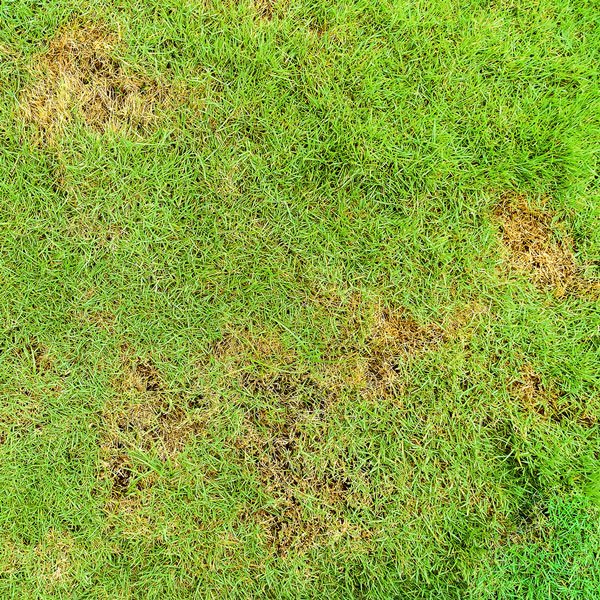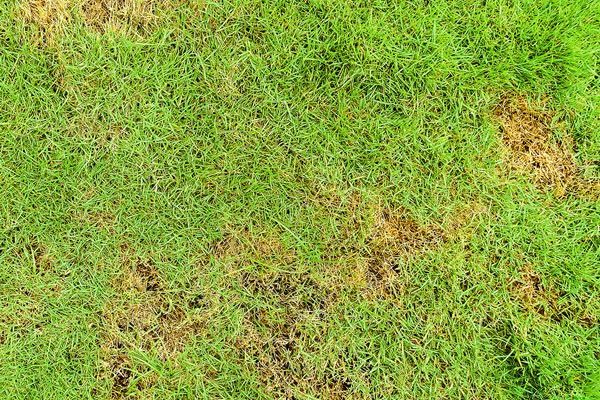
Grub worms are the larvae of certain beetles, and they thrive in moist environments. What makes them particularly tricky is that you often don’t see the damage until it’s too late. It’s like finding out someone borrowed your favorite book and never returned it; you’re left with a gaping hole where once it stood. Knowing the *signs of grub worm damage* can help you catch these pests before they turn your lawn into a patchy disaster.
So, how do you know if these little critters are invading your space? Let’s dive into the telltale signs you should be on the lookout for!
What Are Grub Worms?
Before we jump into the signs of damage, let’s take a moment to understand what grub worms actually are. Grub worms are the immature stage of various beetles, including the Japanese beetle and the June bug. They typically have a soft, white, wriggly body with a brown head. You might find them lurking just below the surface of your lawn or garden, happily munching away at the roots of your plants.
These larvae thrive in environments that are moist and rich in organic matter. So, if you’ve got a lush lawn or a thriving garden, you might inadvertently be creating a buffet for them. Grub worms generally do their damage in late summer and early fall, when they are in their growth phase and actively searching for food.
Here’s the thing: if you don’t catch these little guys early, they can cause significant damage to your lawn. Without roots to anchor your grass or flowers, you’ll likely see some serious issues pop up.
Wilting Grass: A Major Red Flag
One of the first signs of grub worm damage in your lawn is wilting grass. You might notice that parts of your lawn look dry and brown, even though you’re watering it regularly. If you tug on the grass and it comes up easily, that’s a solid indication that the roots have been compromised by the grubs.
What’s happening here? Grubs feed on the roots of your grass and plants, essentially cutting off their lifeline. Without those roots, the grass can’t absorb water or nutrients, leading to a wilting appearance. This kind of damage often spreads, so if you see some patches, don’t ignore them!
To check for grub worms, you can peel back a bit of the wilting grass. If you see brown or damaged roots—or even the worms themselves—you’ve likely got a grub problem on your hands.
Patchy Lawn: The Ugly Truth
Another indicator of grub worm damage is patchy areas in your lawn. If you’re seeing uneven spots where the grass seems to be dying, it might not just be a natural aging process. Grubs can cause large patches of grass to die off due to their relentless feeding.
You might be wondering how to differentiate between grub damage and other issues like drought stress. One clue is the way the grass responds. If you water those patchy areas and they don’t green up, it’s time to dig deeper. Look for the little white grubs beneath the soil surface.
Every yard is different, so the severity can vary widely. Some will have small, scattered patches, while others might show more extensive damage. Whatever the case, patchiness is a clear sign to investigate!
Animal Activity: Unwelcome Guests
Here’s a little-known fact: if you start seeing more unwanted animal activity in your yard, it might be related to grub worms. Animals like birds, raccoons, and skunks are known to dig around in lawns and gardens in search of these tasty larvae. If you start noticing more wildlife in your yard than you’d like, consider it a hint that grubs might be lurking below.
For instance, a flock of birds suddenly showing up could mean they’ve discovered a food source. Raccoons and skunks, with their digging habits, can quickly turn your lawn into a battlefield as they search for grubs.
If you see signs of digging or disturbed soil, take a closer look. You might find a hidden grub problem that needs your attention.
Discolored Leaves: A Signs from Your Plants
While most signs of grub damage are evident in your grass, don’t overlook your garden plants. If you notice that the leaves of your flowers or vegetables are discolored or wilting, it could be related to grub worms. Grubs can damage the root systems of plants, leading to nutrient deficiencies that manifest as yellowing or browning leaves.
When roots are damaged, water and nutrients can’t travel effectively, making your plants more vulnerable to other pests and diseases. If your plants seem unhealthy, it’s wise to investigate below the soil surface.
Keep an eye on the overall condition of your plants. If they don’t perk up with proper care, it might be time to check for those sneaky grubs.
How to Confirm Grub Worm Presence
If you suspect grub worms are the culprits behind your lawn’s decline, you’ll want to confirm their presence. A simple way to do this is through a soil inspection. Here’s a step-by-step guide:
1. Choose a section of your lawn or garden that looks suspicious.
2. Use a spade or shovel to dig a small section about 1 square foot deep.
3. Look for the grubs, which are typically found about 4-6 inches below the soil surface.
4. Count how many you find—if there are more than 5 to 10 grubs in that section, it’s time to take action.
This hands-on approach will give you a clear understanding of the grub situation in your yard.
Taking Action Against Grub Worms
If you’ve confirmed that grub worms are wreaking havoc in your lawn or garden, don’t worry—there are steps you can take. Here are a few methods to consider:
- Natural Predators: Encourage birds and other wildlife that eat grubs to visit your yard.
- Beneficial Nematodes: These microscopic worms target grubs and are safe for your garden.
- Chemical Treatments: If the infestation is severe, you may decide to use insecticides specifically designed for grubs. Make sure to follow all guidelines carefully.
- Healthy Lawn Practices: Keep your lawn healthy with proper watering, fertilization, and mowing. A strong lawn is less vulnerable to grub damage.
Taking action early can save your lawn from extensive damage. Just like tackling a messy room, the sooner you deal with a grub infestation, the easier it will be.
Preventing Grub Worm Infestations
Preventing grub worm problems in the first place is the best strategy. Here are some tips to keep these pests at bay:
- Regular Lawn Maintenance: Mow your grass to the appropriate height and keep it healthy.
- Aeration: Aerate your lawn to improve drainage and reduce moisture that attracts grubs.
- Soil Testing: Check your soil health to ensure it’s not overly compacted or nutrient-poor.
- Timing: Apply preventative treatments in late spring to early summer, before grubs become adults.
Remember, a little bit of proactive care goes a long way. It’s always easier to prevent problems than to fix them!
In conclusion, being vigilant about the *signs of grub worm damage* can save you from a lot of headaches down the road. Whether it’s wilting grass, patchy lawns, or unexpected animal visitors, knowing what to look for can help you tackle these pesky invaders. By staying informed and taking action early, you can maintain the beauty and health of your lawn and garden. So keep your eyes peeled, and happy gardening!

